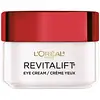What's inside
What's inside
 Key Ingredients
Key Ingredients

 Benefits
Benefits

 Concerns
Concerns

 Ingredients Side-by-side
Ingredients Side-by-side

Water
Skin ConditioningDimethicone
EmollientGlycerin
HumectantC12-15 Alkyl Benzoate
AntimicrobialShorea Robusta Seed Butter
EmollientStearic Acid
CleansingPalmitic Acid
EmollientPEG-100 Stearate
Glyceryl Stearate
EmollientPEG-20 Stearate
EmulsifyingStearyl Alcohol
EmollientParaffin
PerfumingGlycine Soja Protein
EmulsifyingTriethanolamine
BufferingCaffeine
Skin ConditioningIsohexadecane
EmollientPhenethyl Alcohol
MaskingHydrolyzed Soy Protein
HumectantAcetyl Trifluoromethylphenyl Valylglycine
Skin ConditioningFaex Extract
Skin ConditioningPolysorbate 80
EmulsifyingAcrylamide/Sodium Acryloyldimethyltaurate Copolymer
Emulsion StabilisingAcrylates Copolymer
Cetyl Alcohol
EmollientRetinyl Palmitate
Skin ConditioningPotassium Sorbate
PreservativeMethylparaben
PreservativeSodium Benzoate
MaskingChlorhexidine Digluconate
AntimicrobialEthylparaben
PreservativePhenoxyethanol
PreservativeWater, Dimethicone, Glycerin, C12-15 Alkyl Benzoate, Shorea Robusta Seed Butter, Stearic Acid, Palmitic Acid, PEG-100 Stearate, Glyceryl Stearate, PEG-20 Stearate, Stearyl Alcohol, Paraffin, Glycine Soja Protein, Triethanolamine, Caffeine, Isohexadecane, Phenethyl Alcohol, Hydrolyzed Soy Protein, Acetyl Trifluoromethylphenyl Valylglycine, Faex Extract, Polysorbate 80, Acrylamide/Sodium Acryloyldimethyltaurate Copolymer, Acrylates Copolymer, Cetyl Alcohol, Retinyl Palmitate, Potassium Sorbate, Methylparaben, Sodium Benzoate, Chlorhexidine Digluconate, Ethylparaben, Phenoxyethanol
Water
Skin ConditioningCetearyl Alcohol
EmollientGlycerin
HumectantDimethicone
EmollientOrbignya Speciosa Kernel Oil
EmollientCetyl Alcohol
EmollientJojoba Esters
EmollientEthyl Macadamiate
Skin ConditioningPropanediol
SolventCetearyl Glucoside
EmulsifyingSodium Hyaluronate
HumectantAstrocaryum Murumuru Seed Butter
EmollientTrifluoroacetyl Tripeptide-2
Skin ConditioningZingiber Officinale Root Extract
MaskingBisabolol
MaskingHydrolyzed Jojoba Esters
Skin ConditioningLimnanthes Alba Seed Oil
Skin ConditioningCrambe Abyssinica Seed Oil
Skin ConditioningCamellia Oleifera Seed Oil
Skin ConditioningSolanum Lycopersicum Seed Oil
EmollientDaucus Carota Sativa Seed Oil
EmollientCitrus Limon Peel Oil
MaskingCitrus Aurantifolia Oil
CleansingCitrus Aurantium Bergamia Fruit Oil
MaskingAdansonia Digitata Oil
EmollientMauritia Flexuosa Fruit Oil
Skin ConditioningCocos Nucifera Oil
MaskingGardenia Taitensis Flower Extract
Skin ConditioningMoringa Oleifera Seed Oil
EmollientCaryocar Brasiliense Fruit Oil
Skin ConditioningHelianthus Annuus Seed Oil
EmollientOlea Europaea Fruit Oil
MaskingSimmondsia Chinensis Seed Extract
AbrasiveTocopherol
AntioxidantHydroxyethyl Acrylate/Sodium Acryloyldimethyl Taurate Copolymer
Emulsion StabilisingCarrageenan
Glucose
HumectantIsomalt
HumectantPhytol
EmollientDextran
Citric Acid
BufferingParfum
MaskingDimethiconol
EmollientEthylhexylglycerin
Skin ConditioningBenzyl Alcohol
PerfumingWater, Cetearyl Alcohol, Glycerin, Dimethicone, Orbignya Speciosa Kernel Oil, Cetyl Alcohol, Jojoba Esters, Ethyl Macadamiate, Propanediol, Cetearyl Glucoside, Sodium Hyaluronate, Astrocaryum Murumuru Seed Butter, Trifluoroacetyl Tripeptide-2, Zingiber Officinale Root Extract, Bisabolol, Hydrolyzed Jojoba Esters, Limnanthes Alba Seed Oil, Crambe Abyssinica Seed Oil, Camellia Oleifera Seed Oil, Solanum Lycopersicum Seed Oil, Daucus Carota Sativa Seed Oil, Citrus Limon Peel Oil, Citrus Aurantifolia Oil, Citrus Aurantium Bergamia Fruit Oil, Adansonia Digitata Oil, Mauritia Flexuosa Fruit Oil, Cocos Nucifera Oil, Gardenia Taitensis Flower Extract, Moringa Oleifera Seed Oil, Caryocar Brasiliense Fruit Oil, Helianthus Annuus Seed Oil, Olea Europaea Fruit Oil, Simmondsia Chinensis Seed Extract, Tocopherol, Hydroxyethyl Acrylate/Sodium Acryloyldimethyl Taurate Copolymer, Carrageenan, Glucose, Isomalt, Phytol, Dextran, Citric Acid, Parfum, Dimethiconol, Ethylhexylglycerin, Benzyl Alcohol
 Reviews
Reviews

Ingredients Explained
These ingredients are found in both products.
Ingredients higher up in an ingredient list are typically present in a larger amount.
Cetyl Alcohol is a fatty alcohol. Fatty Alcohols are most often used as an emollient or to thicken a product.
Its main roles are:
Though it has "alcohol" in the name, it is not related to denatured alcohol or ethyl alcohol.
The FDA allows products labeled "alcohol-free" to have fatty alcohols.
Learn more about Cetyl AlcoholDimethicone is a type of synthetic silicone created from natural materials such as quartz.
What it does:
Dimethicone comes in different viscosities:
Depending on the viscosity, dimethicone has different properties.
Ingredients lists don't always show which type is used, so we recommend reaching out to the brand if you have questions about the viscosity.
This ingredient is unlikely to cause irritation because it does not get absorbed into skin. However, people with silicone allergies should be careful about using this ingredient.
Note: Dimethicone may contribute to pilling. This is because it is not oil or water soluble, so pilling may occur when layered with products. When mixed with heavy oils in a formula, the outcome is also quite greasy.
Learn more about DimethiconeGlycerin is already naturally found in your skin. It helps moisturize and protect your skin.
A study from 2016 found glycerin to be more effective as a humectant than AHAs and hyaluronic acid.
As a humectant, it helps the skin stay hydrated by pulling moisture to your skin. The low molecular weight of glycerin allows it to pull moisture into the deeper layers of your skin.
Hydrated skin improves your skin barrier; Your skin barrier helps protect against irritants and bacteria.
Glycerin has also been found to have antimicrobial and antiviral properties. Due to these properties, glycerin is often used in wound and burn treatments.
In cosmetics, glycerin is usually derived from plants such as soybean or palm. However, it can also be sourced from animals, such as tallow or animal fat.
This ingredient is organic, colorless, odorless, and non-toxic.
Glycerin is the name for this ingredient in American English. British English uses Glycerol/Glycerine.
Learn more about GlycerinWater. It's the most common cosmetic ingredient of all. You'll usually see it at the top of ingredient lists, meaning that it makes up the largest part of the product.
So why is it so popular? Water most often acts as a solvent - this means that it helps dissolve other ingredients into the formulation.
You'll also recognize water as that liquid we all need to stay alive. If you see this, drink a glass of water. Stay hydrated!
Learn more about Water